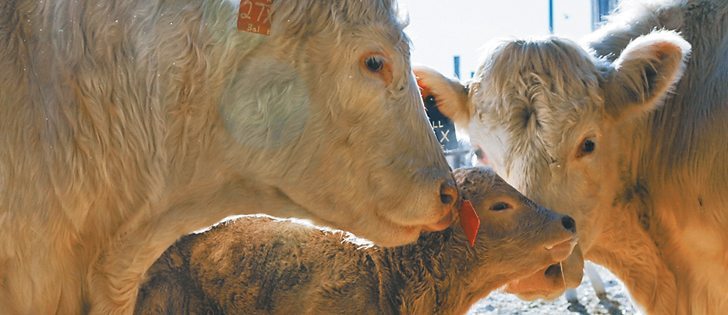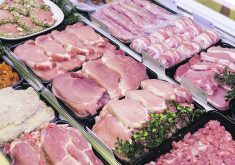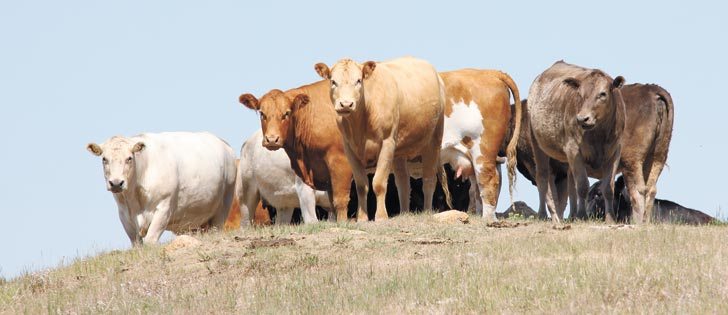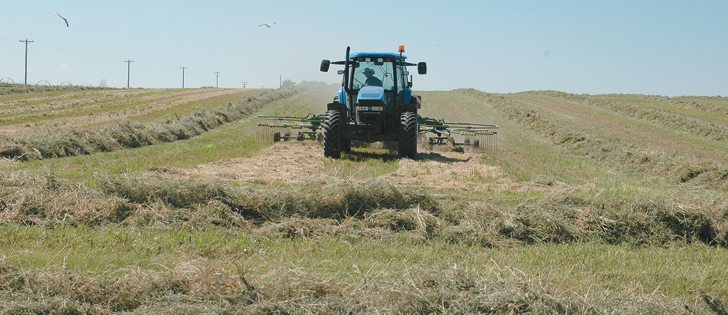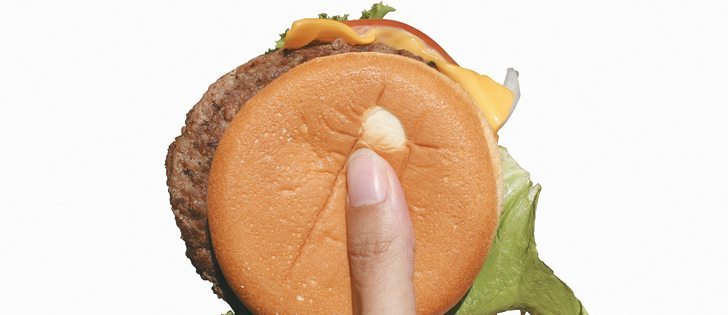Feed costs ($/head)
The lucrative cattle market is prompting cow-calf producers to sell their heifers for slaughter instead of retaining them for herd expansion.
However, those with confidence that prices will hold may be sharpening their pencils as they consider heifer retention.
Ben Hamm, a business development specialist with Manitoba Agriculture, examined the costs of retaining heifers to provide guidance to cattle producers making those decisions.
He said he did the analysis “just because of the extra cost this year to retain heifers, just due to the opportunity costs of that heifer, that 550 pound heifer calf. That’s what’s adding the cost of the replacement heifer so high, is the cost of that heifer at 550 pounds. So we’re giving up revenue if we’re keeping this replacement heifer back.”
Read Also

Flax sector sees omega-3 opportunity
SASKATOON — A global shortage of omega-3 oils could be an opportunity for the flax sector, says an industry official….
Hamm used $245 per hundredweight in his calculations, but market prices rose two weeks after he made them in early March. Using his original figure, Hamm calculated the cost of developing a 2014 heifer into a pregnancy-checked female in fall 2015 at $2,201.07 per head.
“I thought it was a good time for us to really look at what it costs them to keep back heifers, and keep in mind the calculations I do show here only take it into the fall of pregnancy.”
Winter feeding until the heifer drops a calf would be added to the cost, said Hamm.
“It’s going to cost you about $2,200 to keep that heifer back. Or do you buy bred cows at $2,000?,” he said.
“I want them to think a little bit about that.”
Feed, pasture and operating costs are factored into Hamm’s analysis of the break-even point, though he acknowledged that every operation is slightly different.
“There’s a lot of things that do come into play here. It gets pretty complicated, and we don’t see the young guys in the industry all excited about this one year profitability when we’ve had 10 years of losses,” he said.
Alberta Agriculture beef and forage specialist Ken Ziegler agreed, saying it’s a matter of confidence.
“You would think that with the powerful calf prices that we’ve been having, that people should be keeping heifers back left and right,” he said.
“But they’re not. The reason they’re not is they don’t have the confidence yet that this investment of this $1,200 heifer calf is actually going to be paying off some day as a brood cow.”
Ziegler said cow-calf producers have delayed equipment purchases and other improvements during the lean years since 2003.
Current prices might allow them to make those purchases. He doubts there will be much cow herd expansion at the ranch level until high cattle prices become “the new normal.”
“If we’ve got four or five years of $1,200 heifers, it’s the new normal,” he said.
“And then I start feeling more confident or indifferent to the risks that it could go sideways. Right now, we’re at a stage where this is too good to be true.”
However, Ziegler said another sector might consider heifer retention.
Feedlots have bought heifers and fed them over the winter. Now they have a choice of feeding them out to finish or breeding them and selling them later as bred heifers.
“They’re in a very different place than the cow-calf guy. Their question is, ‘with this investment that I’ve got, where can I make the most amount of money?’ ” he said.
“The feedlots’ perspective is, ‘should I keep her for another 90 or 120 days to finish her, or should I keep her for 100 to 180 days, which is not that much longer, and sell her as a bred?’ Inventory is leaving the yard either way.”
As always in the sector, it comes down to risk calculations.
For example, feedlots can forward sell their heifers into the slaughter market and make $25 per head. Or, they could forfeit that security, feed the heifers longer, sell them as bred animals and potentially make $300.
The risk may be greater for cow-calf producers.
Hamm said the Western Livestock Price Insurance program provides some protection, but it is short term.
Contact barb.glen@producer.com
Calcuating costs
With cattle prices up and feed costs down, many producers are contemplating keeping heifer calves to raise to become bred heifers. But does this make good economic sense? Producers must know their costs to help them calculate their break evens. Ben Hamm of Manitoba Agriculture has provided this example of the costs of raising a replacement heifer.
Feed costs ($/head)
Ground barley (224 days x 6.50 lb./heifer/day ÷ 48 lb./bu x $3.25/bu.) 98.58
Hay (224 days x 18.10 lb./heifer/day ÷ 2000 lb./ton x $80/ton) 162.18
Supplements (salt, minerals, vitamins, ionophore) (224 days x 1 lb./heifer/day ÷ 2000 lb./ton x $450/ton) 50.40
Total feed costs $311.16
Other operating costs ($/head)
heifer cost* 1,362.85
breeding cost 34.00
straw 13.44
veterinary medicine & supplies 16.15
annual fuel & repair costs 7.83
utilities 4.20
replacement heifer selling cost 38.40
insurance 12.36
manure removal 8.33
pasture costs 103.27
barn & office supplies 1.20
death loss 17.12Subtotal operating costs 1,930.31
Operating interest 90.31
Total operating costs $2,020.62
Fixed costs ($/head)
depreciation — buildings 16.28
depreciation — machinery & equipment 52.53
investment — buildings 4.97
investment — machinery & equipment 9.85
investment — pasture land 0.00
Total fixed costs $83.63
Total operating & fixed costs ($/head) $2,104.25
Break-even calculations
- If the intended sale price of the bred heifer is $2,100, to break even and cover total cost, the purchase price of a 550 lb. heifer can be $231.87/cwt.
- If an operation is only intending to cover operating cost, the amount spent for that 550 lb. heifer can be $254.95/cwt.
- If the intent is to cover operating and labour costs, the amount spent for that 550 lb. heifer calf can be $247.07 cwt.
- To cover operating and fixed cost, the amount paid for that 550 lb. heifer can be $239.75.


